By Lt. Col. Harold E. Raugh, Jr., Ph.D., U.S. Army (Ret.)
Success in combat and life and death on the battlefield may often owe to the manpower, materiel, or logistics superiority of one opponent over the other. However, intangible considerations, including effective leadership, unit esprit de corps, and resolute discipline may be even more important.
This is the theme of the outstanding and most welcome Leadership in the Crucible:
The Korean War Battles of Twin Tunnels and Chipyong-ni (Texas A&M University Press, College Station, 2003, 272 pp., illustrations, maps, notes, index, $32.95 hardcover). Retired U.S. Army Colonel and former West Point history professor Kenneth E. Hamburger (under whom this reviewer taught military history at West Point), after years of study, research, reflection and practical experience, has written a perceptive assessment of two pivotal battles that helped turn the tide of the Korean War in favor of the United Nations allies.
In the wake of serious UN defeats during the November 1950 and January 1951 Chinese Communist invasions, the U.S. 23rd Infantry Regimental Combat Team (RCT) and attached French battalion halted the Chinese on- slaught at the battles of Twin Tunnels (February 1, 1951), and then defeated the Chinese for the first time in the war at Chipyong-ni (February 13-14, 1951).
Chronicling in detail the combat actions of the 23rd RCT and its soldiers, this study focuses on the leadership, decisions, and actions of the regimental commander Colonel Paul L. Freeman, Jr., his superiors, and his subordinates in the chain of command, and the impact of their leadership on their soldiers in combat. Hamburger also evaluates such aspects as geography, weather, weapons, shelter, and supplies. According to Hamburger, the main reason for the unit’s success was that the “command was a strong one, with high morale and superb leadership.”
Based on primary and secondary sources, plus anecdotal recollections, this book brings the Battles of Twin Tunnels and Chipyong-ni to life. Excellent maps and numerous illustrations create a visual dimension to the work and enhance the elegantly written text.
Leadership in the Crucible well fulfills the author’s purpose to “inform, educate, and inspire others in the profession of arms.” The book serves as a primer of military leadership and portrays a detailed Korean War campaign analysis. It makes a significant contribution
to the understanding of combat leadership and of the human element in warfare. What could be better?
Recent and Recommended
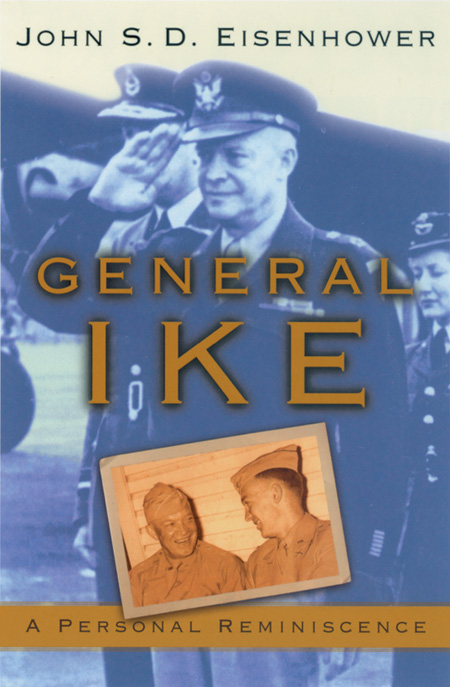 General Ike: A Personal Reminiscence, by John S.D. Eisenhower, The Free Press, New York, 2003, 277 pp., illustrations, maps, appendices, notes, index, $27.00 hardcover.
General Ike: A Personal Reminiscence, by John S.D. Eisenhower, The Free Press, New York, 2003, 277 pp., illustrations, maps, appendices, notes, index, $27.00 hardcover.
John S.D. Eisenhower, the son of General of the Army and President Dwight D. Eisenhower, has established through his previous books on the Mexican War and various world war topics a solid reputation as a historian.
More importantly, John Eisenhower, as “Ike’s” son, was an observer of many historical events. Instead of writing a full biography, Eisenhower has examined the military rather than the political career of his father. The focus is on Ike’s relationships with his superiors and colleagues and begins with “Early Influences: George S. Patton, Fox Conner, and John J. Pershing.” Subsequent chapters highlight Ike’s association with Generals Douglas MacArthur, George C. Marshall, Bernard L. Montgomery, and Charles De Gaulle and Prime Minister Winston Churchill. These vignettes are thought-provoking “for the simple reason that the facets of [Ike’s] personality appear differently depending on the individual he was dealing with at a given time.”
Eisenhower does not judge his father a “great general,” but believes that Ike’s “greatest claim to ‘brilliance’ rests on his utter relentlessness in his pursuit of his goal, the destruction of Hitler.” Ike was definitely a man of character and strength, and had the ability to inspire confidence in his commanders and soldiers.
This superb book, based on the author’s personal observations, experiences, and research, provides a glimpse of history and “a son’s view of a great military leader—highly intelligent, strong, forceful, kind, yet as human as the rest of us.”
In Brief
Atlas of American Military History, edited by James C. Bradford, Oxford University Press, New York, 200, 256 pp., illustrations, maps, select bibliography, index, $50.00 hardcover.
Detailed and accurate maps are essential to the military commander conducting tactical ground operations as well as to historians later studying the battles. Oxford University Press’s Atlas of American Military History chronicles in 19 chapters, each written by a different subject matter expert, the military history of the United States (or the territory it now comprises) from 1512 through operations in Kosovo and Afghanistan. The information in each chapter is current, worthwhile, and of uniformly excellent quality. The highlight of this outstanding volume is the 140 specially commissioned maps that permit the reader to visualize and understand the tactics and conduct of operations of the various battles and military operations. This magnificent atlas deserves a special place on every military reader’s bookshelf.
Soldiers in the Shadows: Unknown Warriors Who Changed the Course of History, by William Weir, New Page Books, Franklin Lakes, NJ, 2002, 287 pp., illustrations, endnotes, bibliography, index, $24.99 hardcover.
This is a curious book. It contains five parts, each comprising the studies of two men. The five parts are: “Filibusters Shake the Establishment” (on William Walker and Frederick T. Ward); “Guerrillas in the Rearguard” (on John Singleton Mosby and Captain Jack); “White Man’s Burden” (on Frederick Funston and Paul von Lettow-Vorbeck); “Britannia’s Wayward Sons” (on Erskine Childers and Orde Wingate); and “The Square and the Spook” (on Matthew B. Ridgway and Edward Lonsdale). The book is also a study in contradictions. The author declares that “this is not a collection of character profiles,” although it basically is; he considers individual motivation and analysis “irrelevant”; and most of his “unknown warriors” are at least somewhat well known. The author also states that Ridgway, as a personality, “is as interesting as mashed potatoes.” The same could more accurately describe this book. With so many good military history books available, the discriminating reader would better spend his or her money elsewhere.
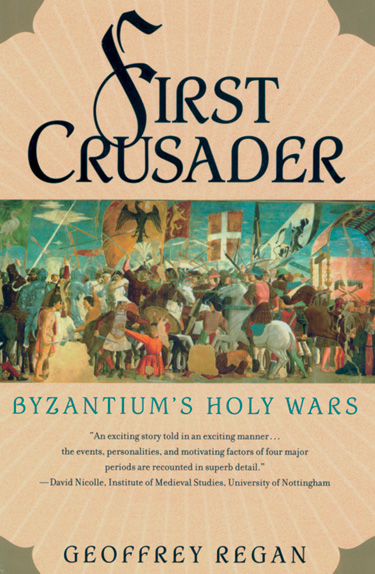 First Crusader: Byzantium’s Holy Wars, by Geoffrey Regan, Palgrave Macmillan, New York, 2003, 280 pp., illustrations, maps, appendices, chronology, notes, bibliography, index, $29.95 hardcover.
First Crusader: Byzantium’s Holy Wars, by Geoffrey Regan, Palgrave Macmillan, New York, 2003, 280 pp., illustrations, maps, appendices, chronology, notes, bibliography, index, $29.95 hardcover.
The Crusades are generally understood to refer to the Christian wars fought after the late 11th century to recapture the Holy Land from the Muslims. Historian Geoffrey Regan challenges this notion, writing that the concept of a crusade originated centuries earlier with the Byzantines after their kingdom was defeated by the Persians in the 7th century. The Byzantine Emperor Heraclius (575-641), according to Regan, was the first to use Christian propaganda to inspire his troops and turned the war against the Persians into the first religious crusade. In this well-written and interesting study, Heraclius’s successful efforts in reorganizing the Byzantine army, defeating the Persians, and recapturing the Holy Land are recounted in riveting detail.
 For God and Glory: Lord Nelson and His Way of War, by Joel Hayward, Naval Institute Press, Annapolis, MD, 2003, 280 pp., illustrations, maps, notes, glossary, bibliography, index $32.95 hardcover.
For God and Glory: Lord Nelson and His Way of War, by Joel Hayward, Naval Institute Press, Annapolis, MD, 2003, 280 pp., illustrations, maps, notes, glossary, bibliography, index $32.95 hardcover.
Admiral Lord Horatio Nelson, according to Dr. Joel Hayward, is “naval history’s grandest figure and the most well-known and revered warrior in Britain’s pantheon of heroes.” The author supports this claim by analyzing Nelson’s fascinating life and unsurpassed naval victories within the context of and focusing on the admiral’s war fighting style; namely, “an individual commander’s unique interpretation of doctrine and his selective use (or rejection) of established tactics,” combined with the application of unique leadership attributes. For God and Glory is thematically arranged, with chapters devoted to Nelson’s perceptions of his enemies; spiritual beliefs; command, leadership, and management; maneuver warfare; and coalition warfare. The author concludes that Nelson’s legacy remains relevant today, and that a leader who emulates the admiral’s war fighting style will be successful.
Florida’s Seminole Wars, 1817-1858, by Joe Knetsch, Arcadia, Charleston, SC, 2003, 160 pp., illustrations, maps, bibliography, index, $24.99 softcover.
The Seminole Indians were a culture in transition in the early 19th century, incorporating many aspects of frontier white society. They (and their black allies) occupied land in Florida coveted by the rapidly expanding white population. The United States fought three bloody wars— 1817-1818, 1835-1842 (“the most costly American Indian war fought by the United States both in men lost and money spent”), and 1855-1858—against the Seminoles before forcing them into a kind of submission. Author Joe Knetsch, an expert on Florida history and member of the Council on America’s Military Past, chronicles in a clear and crisp text, with many fascinating contemporary illustrations, these generally overlooked Indian wars fought east of the Mississippi River.
A Taste for War: The Culinary History of the Blue and the Gray, by William C. Davis, Stackpole, Mechanicsburg, PA, 2003, 240 pp., illustrations, recipes, notes, bibliography, index, $26.95 hardcover.
The Napoleonic adage that “an army marches on its stomach” was especially true during the American Civil War, when both opponents fielded unprecedented large armies. “Soldiers were always concerned with food and few of them escaped occasional hunger, the rotten meat, worm-infested bread, the illness from want of fruits and vegetables, or utter absence of even the basic principles of nutrition and a balanced diet.” Based on anecdotal accounts, reminiscences, and official records, prolific Civil War historian William C. Davis explores the methods of preparation and types of food served to Billy Yank and Johnny Reb in camp, on the march, on the battlefields, and even in prisoner of war camps, where rats were considered a delicacy. This informative book, enjoyable and interesting to read, includes 55 pages of authentic, mouth-watering Civil War recipes for various foods and beverages.
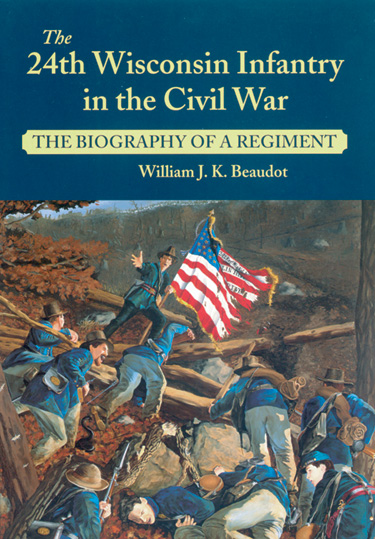 The 24th Wisconsin Infantry in the Civil War: The Biography of a Regiment, by Wm. J.K. Beaudot, Stackpole, Mechanicsburg, PA, 2003, 438 pp., illustrations, map, notes, bibliography, index, $32.95 hardcover.
The 24th Wisconsin Infantry in the Civil War: The Biography of a Regiment, by Wm. J.K. Beaudot, Stackpole, Mechanicsburg, PA, 2003, 438 pp., illustrations, map, notes, bibliography, index, $32.95 hardcover.
The 24th Wisconsin Volunteer Infantry was one of more than three hundred “fighting regiments” of the Union Army during the Civil War. It consisted of men—many of German and English ancestry—from the city of Milwaukee and its environs and was called the “Milwaukee Regiment.” Its soldiers fought well at Missionary Ridge, Franklin, Stones River, Chickamauga, and in the Atlantic campaigns, suffering over 10 percent battle deaths. Author William Beaudot has used numerous first-hand accounts—letters, diaries, newspaper articles, and unit histories—and woven them into a comprehensive collective biography of an infantry regiment. This superb study is especially worthwhile in highlighting the “seemingly mundane matters [that] dominated army life—food, clothing, shelter, comradeship, and the like. This was the stuff of a common soldier’s life.”
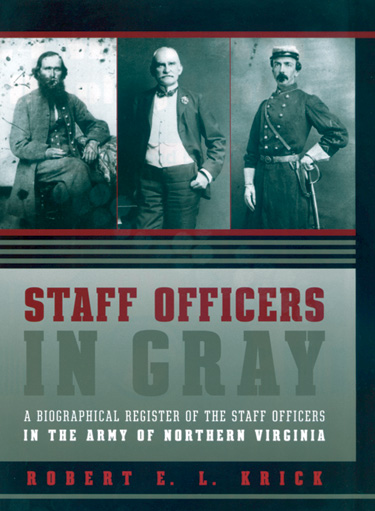 Staff Officers in Gray: A Biographical Register of the Staff Officers in the Army of Northern Virginia, by Robert E.L. Krick, University of North Carolina Press, Chapel Hill, 2003, 312 pp., abbreviations, illustrations, appendices, $45.00 hardcover.
Staff Officers in Gray: A Biographical Register of the Staff Officers in the Army of Northern Virginia, by Robert E.L. Krick, University of North Carolina Press, Chapel Hill, 2003, 312 pp., abbreviations, illustrations, appendices, $45.00 hardcover.
The “meat” of this detailed volume consists of biographical sketches of over 2,300 staff officers of Confederate General Robert E. Lee’s Army of Northern Virginia. A typical entry includes the individual’s dates and locations of birth and death, pre- and post-Civil War activities and occupations, and the specific positions held during the war. Historian Robert Krick has ably chronicled the evolution of the Confederate staff system, placing the Army of Northern Virginia staff corps within this overall context, and describes the duties of those who served in the various adjutant general, aide-de-camp, inspector general, and artillery, engineer, ordnance, signal, and quartermaster staff officer positions. It is well researched and can serve as a valuable research tool and reference book. It also helps put a face on staff officers who, though mostly unknown, nevertheless made important contributions to the war effort.
Toward the Flame: A Memoir of World War I, by Hervey Allen, University of Nebraska Press Bison Books, Lincoln, 2003, 282 pp., illustrations, addenda, $15.95 softcover.
Hervey Allen was a lieutenant in the 111th Infantry Regiment, 28th Division (Pennsylvania National Guard) in France during World War I. His regiment was thrown into the maelstrom of combat during the Second Battle of the Marne of July 1918, an operation characterized not by trench fighting but by open combat. The 28th Division was attached to the French Army and the French commander ordered Allen’s division to capture the strongly fortified village of Fismette. Allen’s candid and balanced narrative of these operations records this futile effort while acknowledging “the stupidity and callousness that often reigned supreme within the Allied war effort.” Allen’s memoir, culminating in the debacle at Fismette (where he was severely wounded), provides an authentic voice to “both the fascination and horrors of battle” in World War I.
With the Foreign Legion in Syria, by John Harvey, Linden Publishing, Fresno, CA, 2003, 287 pp., map, $14.95 softcover.
The French Foreign Legion of popular imagination—stalwart, romantic, mysterious Beau Geste-like soldiers—is basically a myth. After World War I service, Englishman John Harvey (a pseudonym) enlisted in the “real” Foreign Legion, headquartered in North Africa, “civilization’s dustbin,… always ready to receive more human refuse for the incinerator.” He served in Syria, then a French mandate, in the late 1920s fighting against the Druses and participating in the brutal massacre of villagers who had refused to pay their taxes. Frustrated by broken promises and used as cannon fodder, Harvey deserted, but was captured and subsequently imprisoned for 18 months. This tale of harsh discipline and beastly degradation—and of sacrifice and gallantry—is a fascinating page-turner.
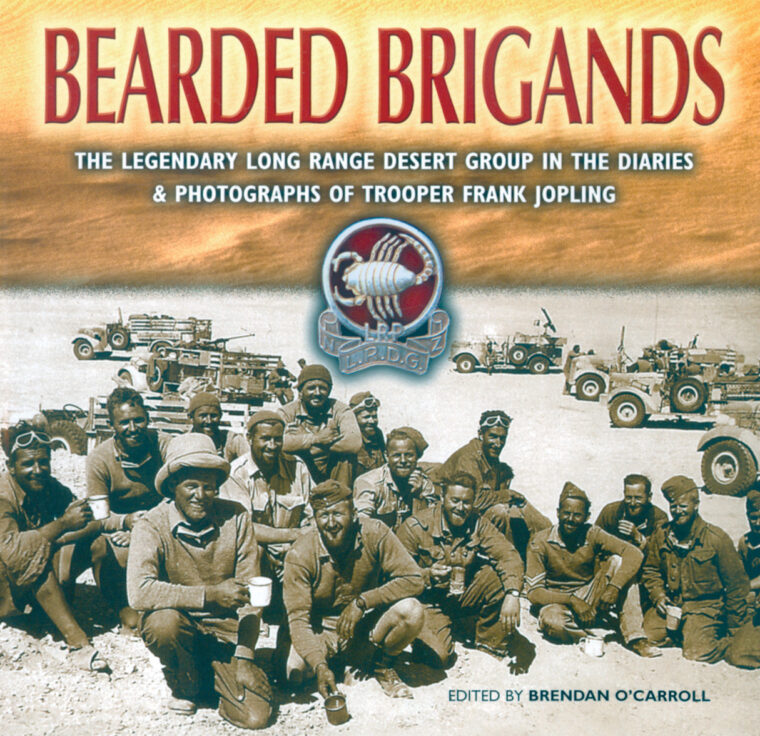 Bearded Brigands: The Legendary Long Range Desert Group in the Diaries and Photographs of Trooper Frank Jopling, edited by Brendan O’Carroll, Leo Cooper, Barnsley, S. Yorks., UK, 2003, 216 pp., illustrations, map, appendices, sources, index, $36.95 hardcover.
Bearded Brigands: The Legendary Long Range Desert Group in the Diaries and Photographs of Trooper Frank Jopling, edited by Brendan O’Carroll, Leo Cooper, Barnsley, S. Yorks., UK, 2003, 216 pp., illustrations, map, appendices, sources, index, $36.95 hardcover.
The legendary Long Range Desert Group (LRDG) fought behind enemy lines in North Africa from 1940 until the end of the campaign in 1943. LRDG units patrolled seemingly uncrossable deserts and made hit-and-run raids on enemy airfields and supply depots, earning reputations as stalwart and gallant soldiers. New Zealand Trooper Frank Jopling served in the LRDG and meticulously kept a vivid and detailed diary of his day-to-day service as well as his participation in patrols and raids. His gripping account, supplemented by his own outstanding photographs, gives an unparalleled view of these desert raiders and their important contributions to Allied victory.
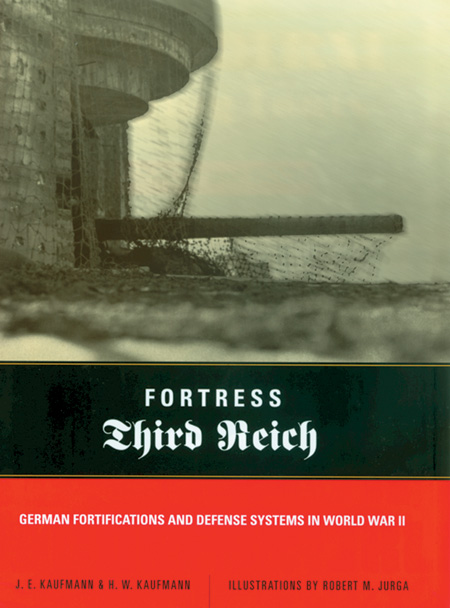 Fortress Third Reich: German Fortifications and Defense Systems in World War II, by J.E. Kaufmann and H.W. Kaufmann, Da Capo Press, Cambridge, MA, 2003, 369 pp., illustrations, maps, appendices, glossary, bibliography, index, $40.00 hardcover.
Fortress Third Reich: German Fortifications and Defense Systems in World War II, by J.E. Kaufmann and H.W. Kaufmann, Da Capo Press, Cambridge, MA, 2003, 369 pp., illustrations, maps, appendices, glossary, bibliography, index, $40.00 hardcover.
By the beginning of World War II in 1939, Adolf Hitler fortified the exposed borders of the Third Reich. As Germany expanded, new fortifications and interior defense systems were constructed, from the Atlantic Wall, which stretched from the Franco-Spanish border to Norway’s Arctic regions, to the later lesser-known New East Wall, designed to hinder the Soviet Army’s advance into Germany. Recognized fortification authority J.E. Kaufmann, with H.W. Kaufmann, has written the first and only comprehensive account of Germany’s World War II defense systems. Profusely illustrated with numerous contemporary photographs, technical drawings, and maps, Fortress Third Reich is a fascinating study that deserves a large audience. This short review does not do justice to the prodigious amount of work required in both researching the German fortifications system and in the preparation of this book.
 War with Iraq: Critical Lessons, by Buster Glosson, Glosson Family Foundation,Charlotte, NC, 2003, 306 pp., illustrations, maps, glossary, index, $28.95 hardcover.
War with Iraq: Critical Lessons, by Buster Glosson, Glosson Family Foundation,Charlotte, NC, 2003, 306 pp., illustrations, maps, glossary, index, $28.95 hardcover.
U.S. Air Force Lt. Gen. Buster C. Glosson was the architect and commander of all Air Force fighter wings in the spectacular air campaign against Iraq during the 1990-1991 Persian Gulf War. Thus, he was a true “insider” during the conflict. In his compelling volume, he narrates his thoughts and activities from the time he arrived in the Persian Gulf in the summer of 1990 to the end of the war in March 1991. A highlight of the memoir is the chronicle and assessment of the evolution and execution of the air war campaign plan, focusing on attacking the enemy’s centers of gravity and on utilizing the precision of the F-117 stealth fighter. Glosson’s account is perceptive and candid, revealing both the aspects of the decision-making process at the highest levels and the unreliability of Israeli intelligence. Glosson’s outstanding account helps fill a gap in the literature of Persian Gulf War airpower and leadership.
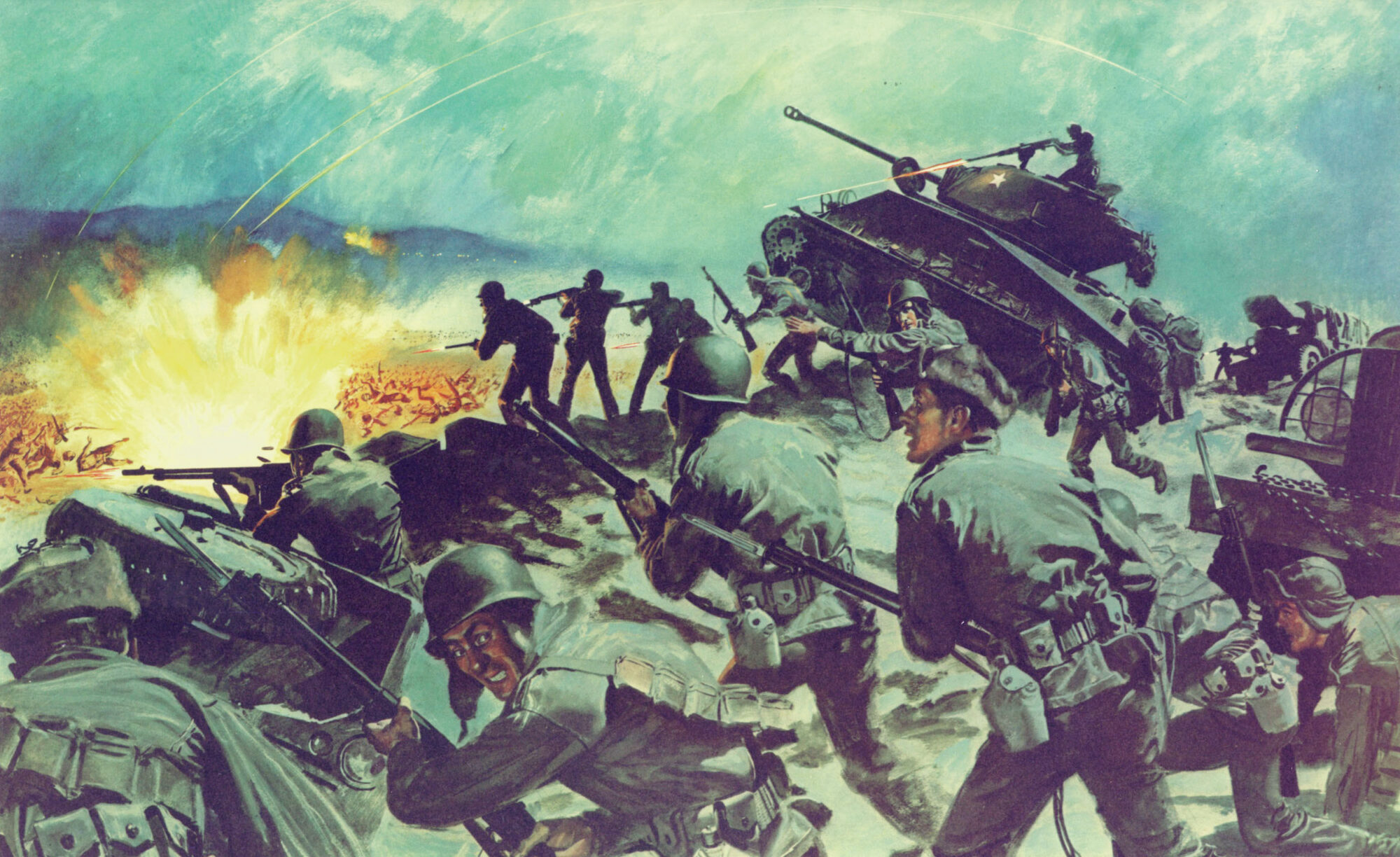

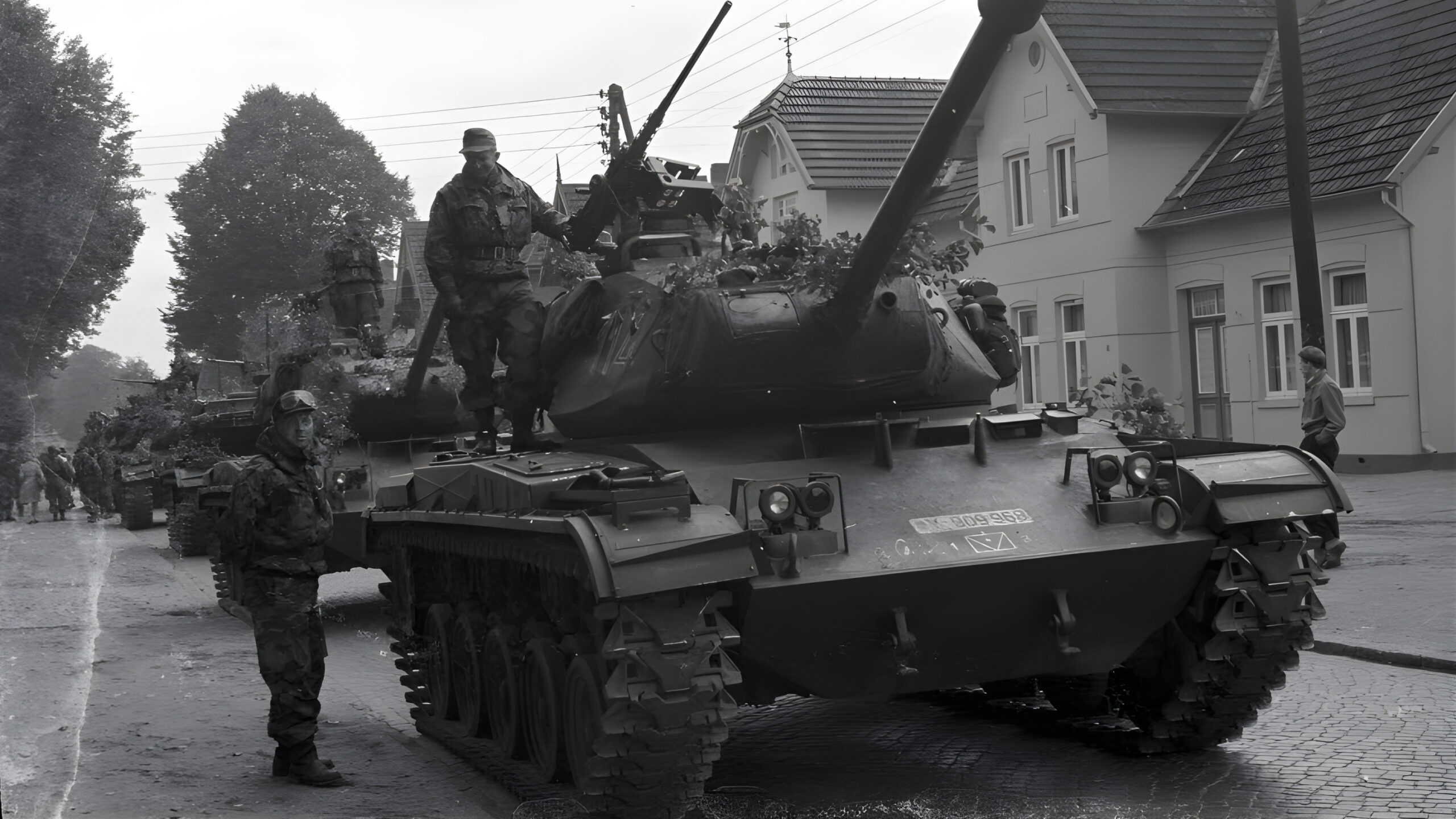
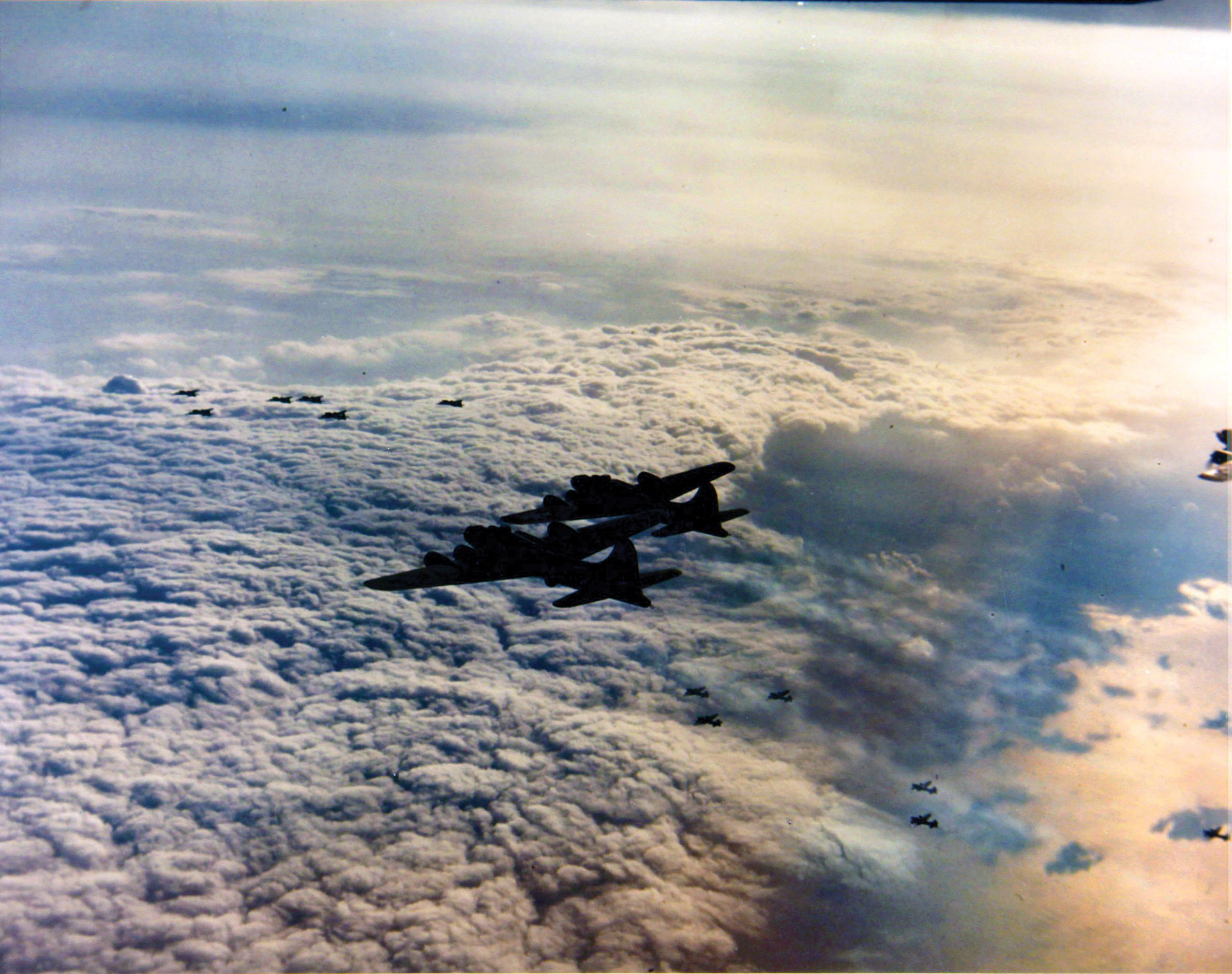
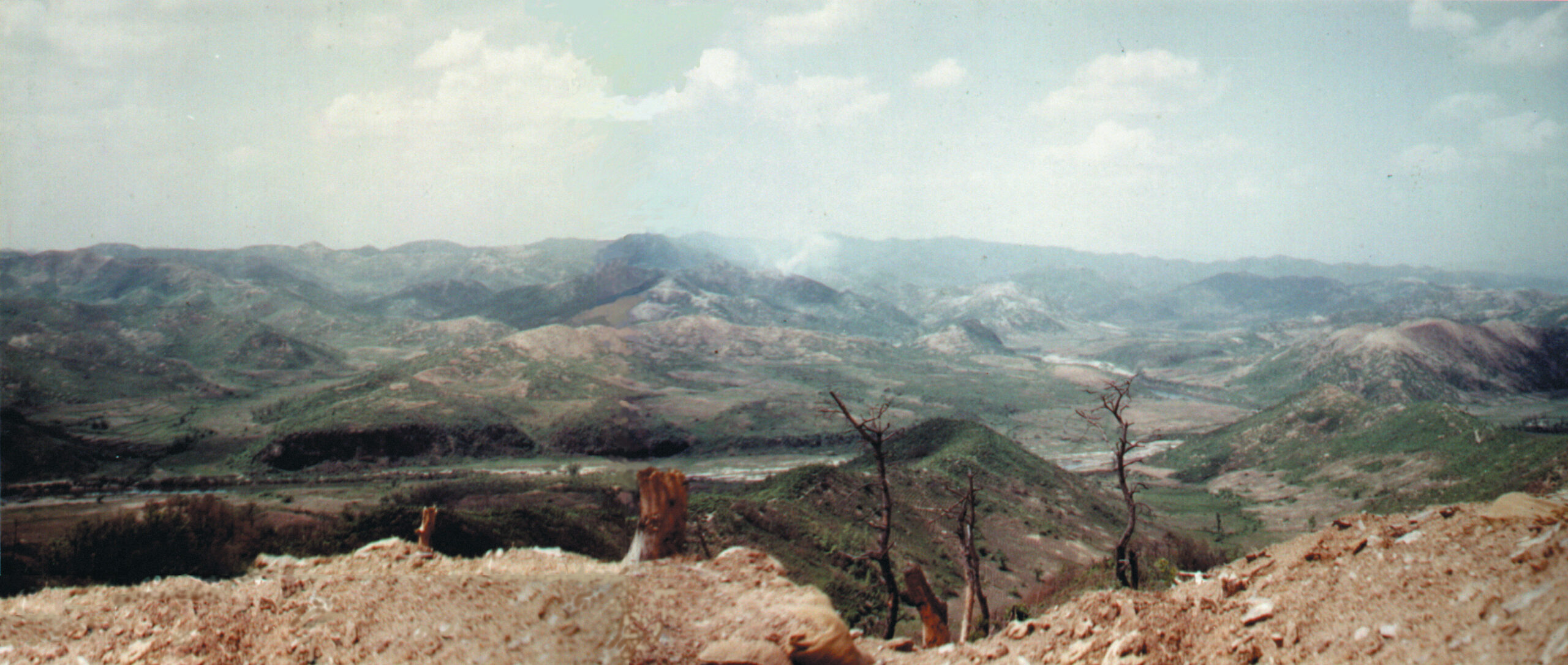
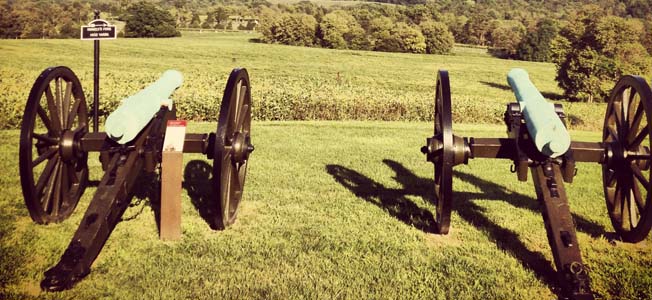
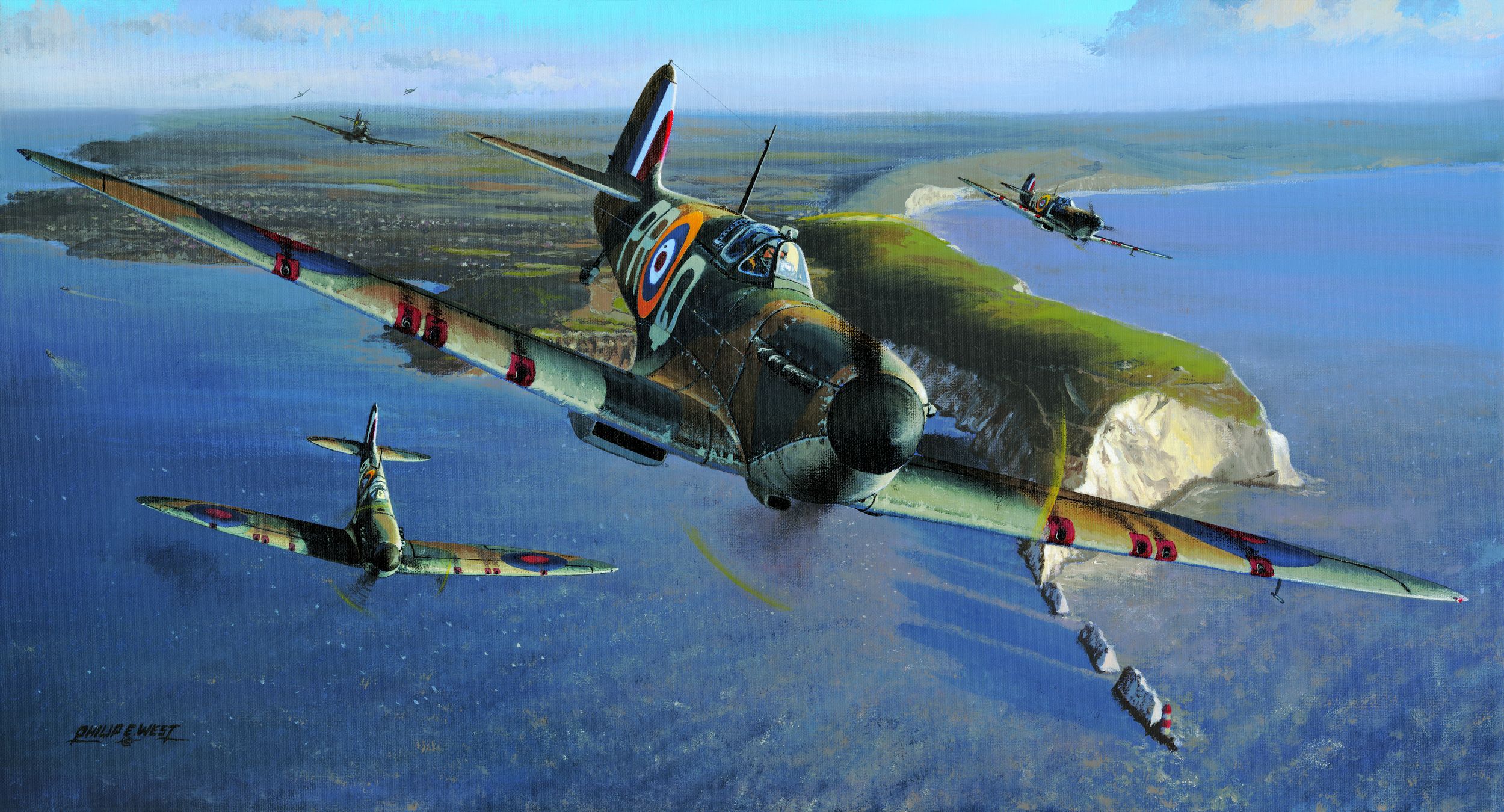
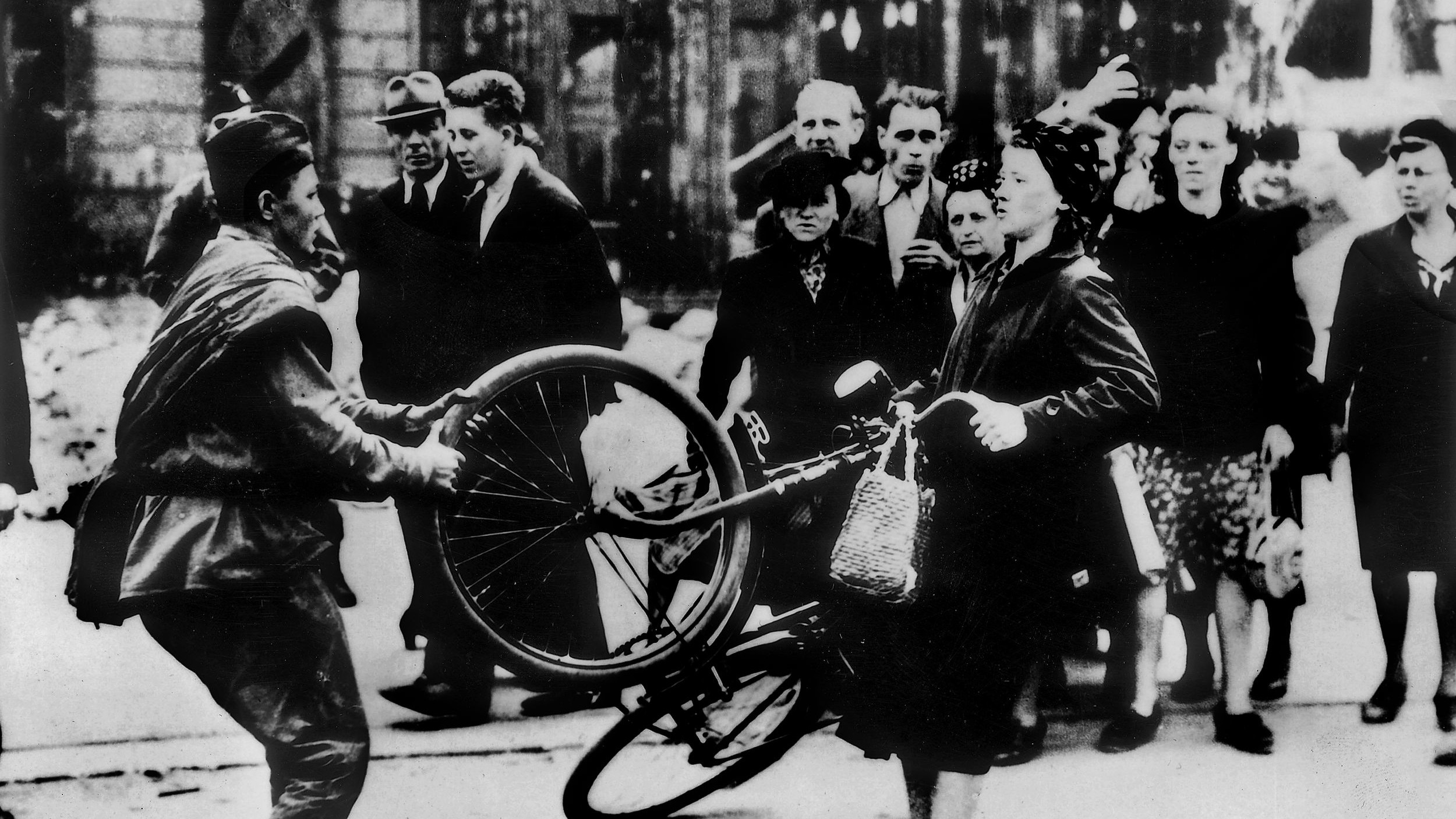
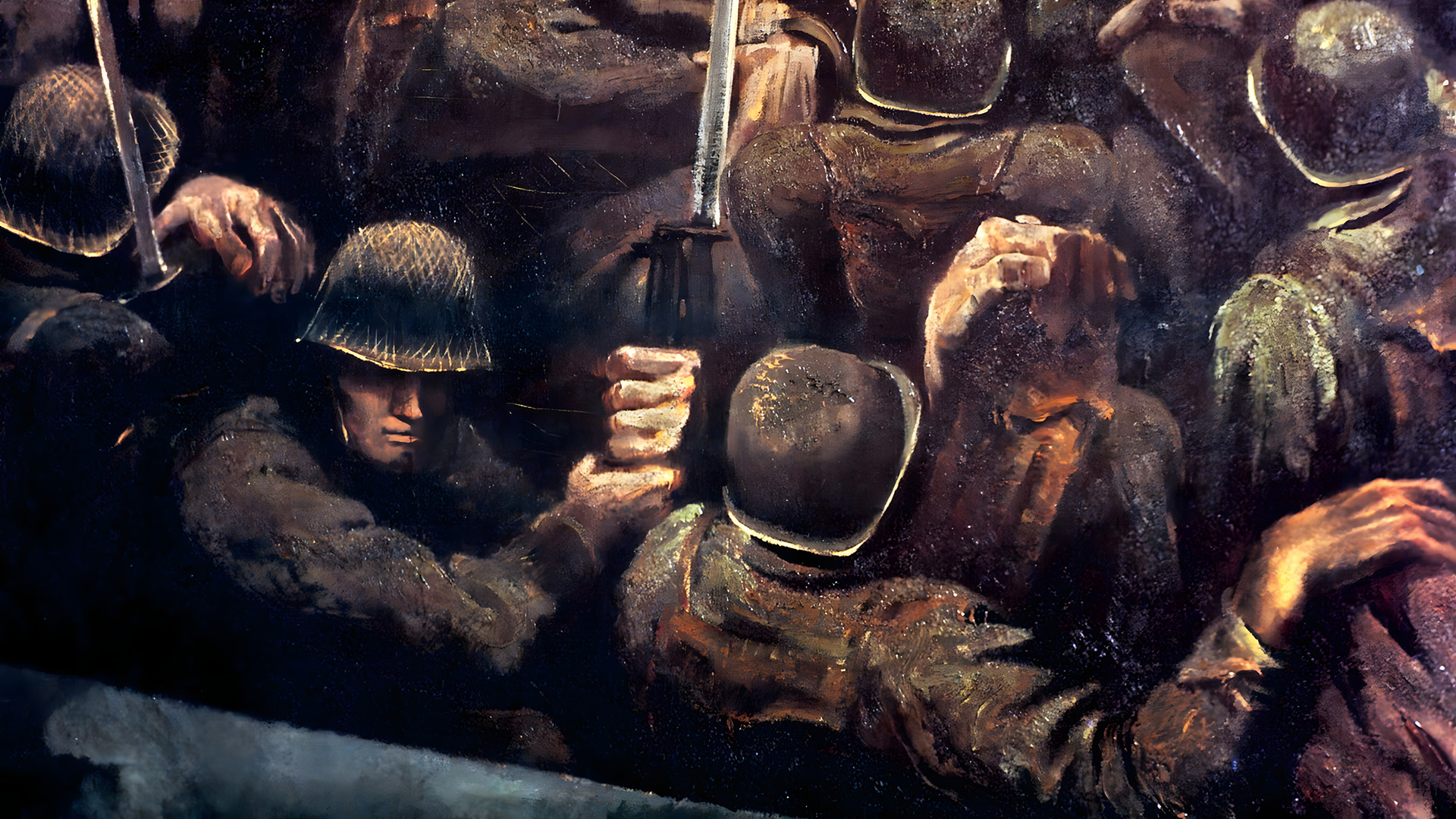
Join The Conversation
Comments
View All Comments